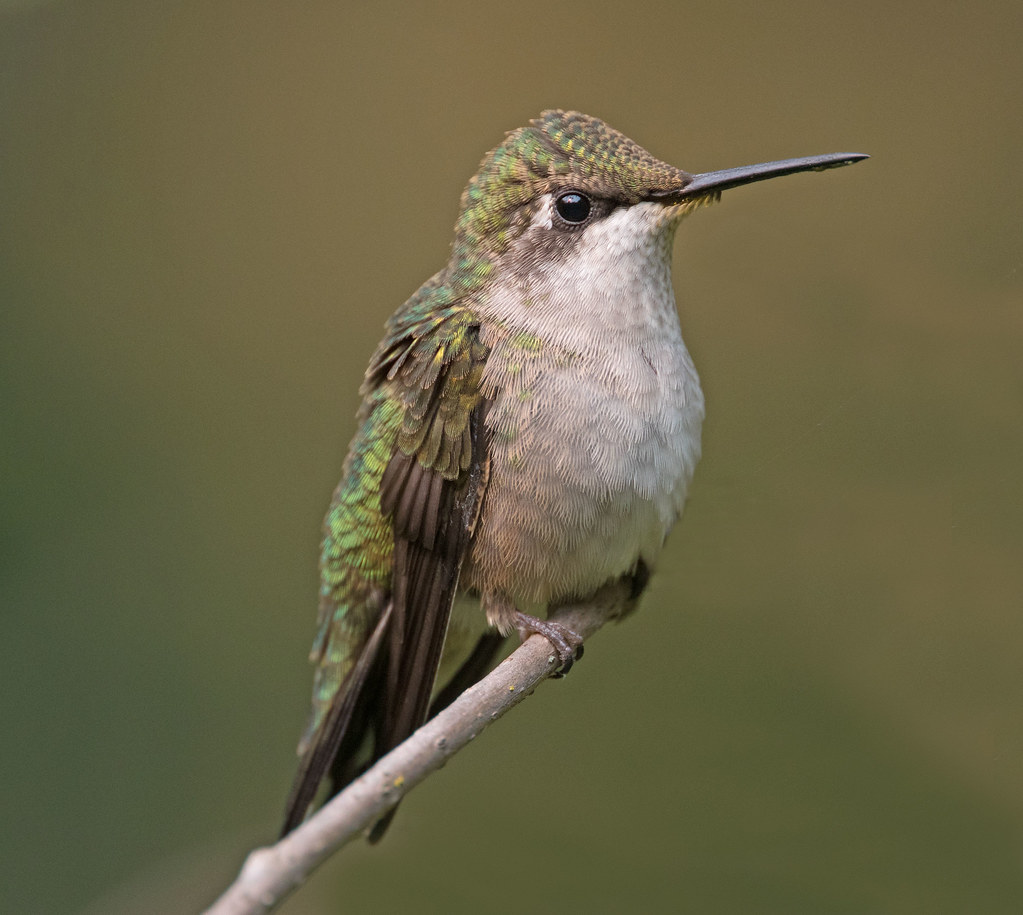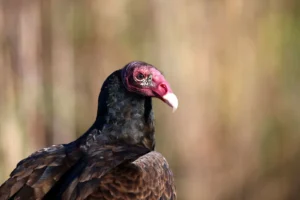by Holly Hastings
Alberta is fortunate to be the “Canadian sweet spot for hummingbird species.”1 We are home to three year-round species: the ruby-throated, calliope, and rufous hummingbirds, with occasional visits from rarer species throughout the year.2 Hummingbirds, native to the Western Hemisphere, are predominantly found in South America.3 These tiny marvels possess a plethora of unique features that set them apart from other birds. Let’s delve into their extraordinary anatomy.
Q: Do you know what a group of hummingbirds is called? Find out below!
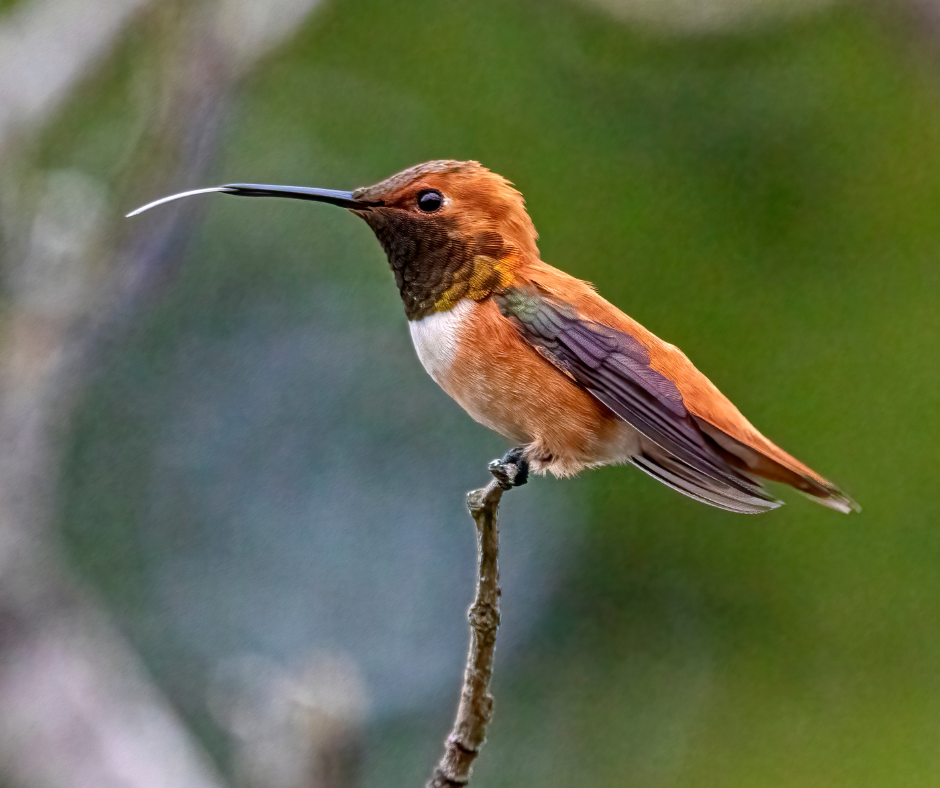
The Brain Behind the Buzz
Hummingbirds have brains that are much larger relative to their bodies than other birds; their brains are 4.2% of their total body weight, which helps them navigate complex environments.4 They see movement in every direction, making them masters of maneuvering through tight spaces.5 With a remarkable memory, from a hippocampal formation two to five times larger than other birds, they recall every flower in their territory and know exactly when each one will bloom again.6
The Nectar Sipper’s Toolkit
With long, slender beaks, hummingbirds sip nectar deep from flowers like nature’s own straws.7 Their tongues can extend as far as their beaks, lapping nectar at a staggering rate of 18 times per second!8 Where does that tongue go when not in use? It coils around their skull, a brilliant design for the ultimate nectar sipper.9
Featherlight Engineering
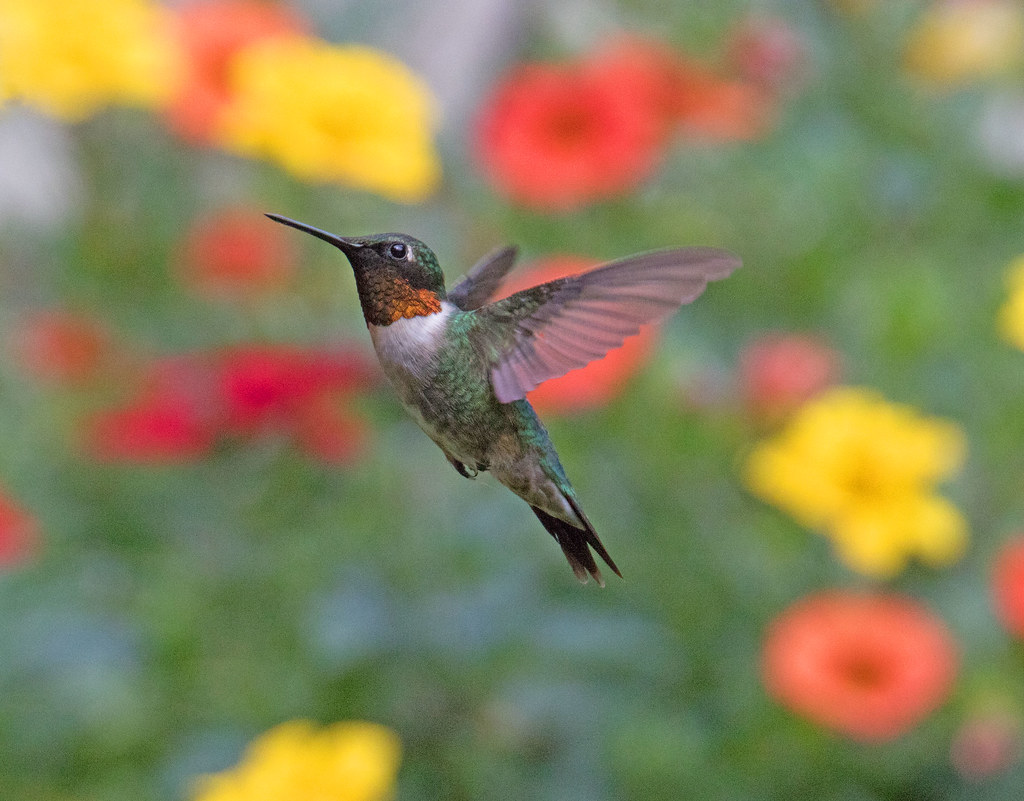
Hummingbirds are built for agility, with lightweight, hollow bones and large flight muscles that power their rapid movements.10 They can weigh between two to twenty grams, which is about the same as a small coin!11 They also have eight sets of ribs compared to the typical avian set of six ribs.12 They have small, weak legs, perfect for perching but not for walking or hopping.13 Even their waste system is designed for flight efficiency, eliminating any unnecessary weight.14 Like all birds, hummingbirds don’t have a bladder, so waste is shot straight from what is called the cloaca, an opening for intestinal, urinary, and reproductive purposes.15
A Need for Speed
Maximum forward flight speeds have been recorded as 48 km per hour and up to 96 km per hour in a dive.16 These birds are powered by a larger heart than other birds that beats up to 1,200 times per minute, delivering the oxygen needed for their fast-powered lifestyle.17 They have two lungs and nine air sacs that work overtime to provide oxygen to their muscles while keeping them cool.18 Hummingbirds have the largest amount of small erythrocytes (red blood cells that carry oxygen) than any other animal in the animal kingdom!19 To sustain their speed, they rely on a lightning-fast metabolism, the greatest mass-to-metabolism ratio among vertebrates, that burns through sugar at a rate requiring a human to drink a soda every minute just to keep up.20
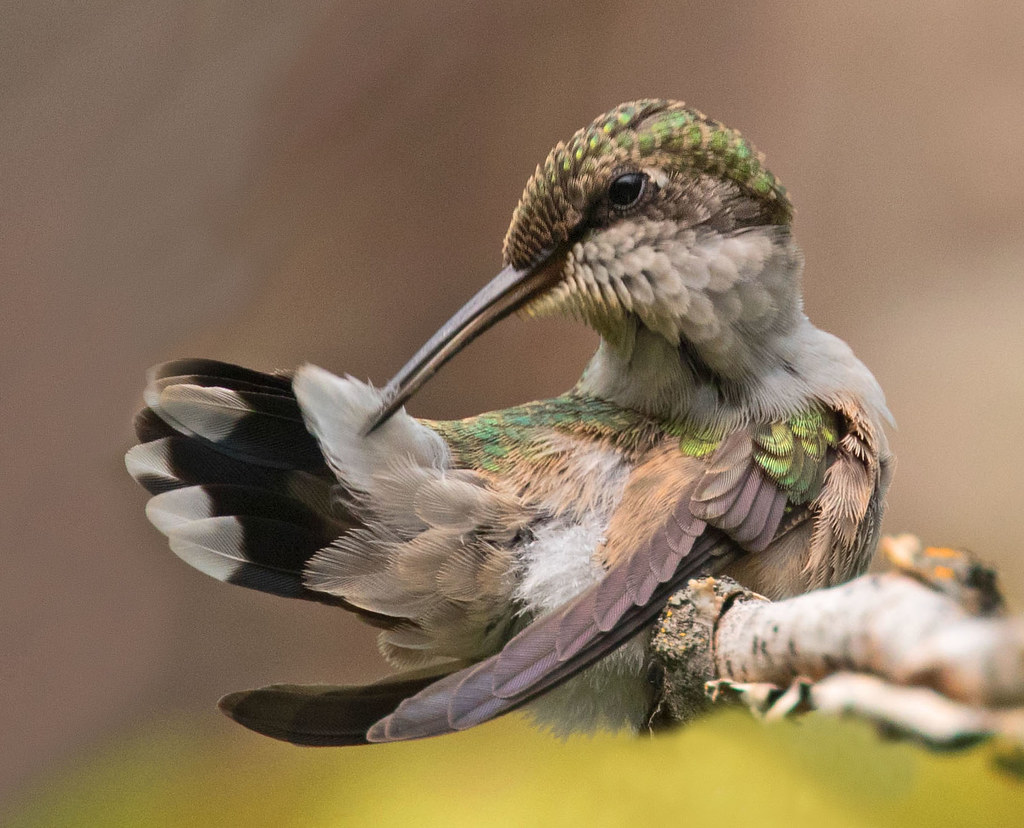
Survival Spectacles
Hummingbirds have unique ways of regulating their body temperature. By dropping their body temperature at night, they conserve energy and survive the cold.21 This means that hummingbirds are heterothermic because they can turn cold-blooded at night.22 Their specialized kidneys manage water intake to keep them hydrated without weighing them down; they prioritize expelling excess water.23
Super Sensory Whisperers
With exceptional hearing and vision, hummingbirds detect even the slightest environmental changes.24 They see ultraviolet light, revealing a world more colorful than ours.25 The males’ shimmering throat feathers, called gorgets, flash bright colors to attract mates, thanks to their microscopic structure of grooves and bubbles that play with light, looking like an oil slick.26 Interestingly, however, they have a weak sense of smell.27
Winged Wonders
Hummingbirds have unique wings in the bird world. Instead of flapping and generating lift, they rotate their wings 180 degrees, allowing them to hover, fly backward, and even sometimes upside down!28 Their wings can beat up to 80 times per second, with different species showing a range of speeds.29 Unique to hummingbirds, their elbow and wrist bones are fused together.30 Without down feathers to keep warm, they rely on their fast metabolism to maintain body heat.31
A: Groups of hummingbirds actually have many names; bouquet, glittering, hover, tune, and shimmer.32
These tiny marvels are beautifully engineered by nature. Next time you see one darting through your garden, remember the incredibly unique mechanics that keep this little bird in the air!
References
- “The Hummingbirds of Alberta.” Prairie Birder. https://prairiebirder.wordpress.com/tag/alberta-hummingbirds/
- “The Hummingbirds of Alberta.” Prairie Birder. https://prairiebirder.wordpress.com/tag/alberta-hummingbirds/
- “The Hummingbirds of Alberta.” Prairie Birder. https://prairiebirder.wordpress.com/tag/alberta-hummingbirds/
- “The Strange Anatomy of Hummingbirds.” Hummingbirdspot. https://www.hummingbirdspot.com/anatomy
- “The Strange Anatomy of Hummingbirds.” Hummingbirdspot. https://www.hummingbirdspot.com/anatomy
- “The Strange Anatomy of Hummingbirds.” Hummingbirdspot. https://www.hummingbirdspot.com/anatomy
- “The Strange Anatomy of Hummingbirds.” Hummingbirdspot. https://www.hummingbirdspot.com/anatomy
- “The Strange Anatomy of Hummingbirds.” Hummingbirdspot. https://www.hummingbirdspot.com/anatomy
- “The Strange Anatomy of Hummingbirds.” Hummingbirdspot. https://www.hummingbirdspot.com/anatomy
- “The Strange Anatomy of Hummingbirds.” Hummingbirdspot. https://www.hummingbirdspot.com/anatomy
- “Anatomy of A Hummingbird: What Makes Up These Tiny Birds?” Perky-Pet. https://www.perkypet.com/articles/anatomy-of-a-hummingbird
- “The Strange Anatomy of Hummingbirds.” Hummingbirdspot. https://www.hummingbirdspot.com/anatomy
- “The Strange Anatomy of Hummingbirds.” Hummingbirdspot. https://www.hummingbirdspot.com/anatomy
- “The Strange Anatomy of Hummingbirds.” Hummingbirdspot. https://www.hummingbirdspot.com/anatomy
- “The Strange Anatomy of Hummingbirds.” Hummingbirdspot. https://www.hummingbirdspot.com/anatomy
- “The Hummingbirds of Alberta.” Prairie Birder. https://prairiebirder.wordpress.com/tag/alberta-hummingbirds/
- “The Hummingbirds of Alberta.” Prairie Birder. https://prairiebirder.wordpress.com/tag/alberta-hummingbirds/
- “The Strange Anatomy of Hummingbirds.” Hummingbirdspot. https://www.hummingbirdspot.com/anatomy
- “The Strange Anatomy of Hummingbirds.” Hummingbirdspot. https://www.hummingbirdspot.com/anatomy
- “The Strange Anatomy of Hummingbirds.” Hummingbirdspot. https://www.hummingbirdspot.com/anatomy
- “The Strange Anatomy of Hummingbirds.” Hummingbirdspot. https://www.hummingbirdspot.com/anatomy
- “The Strange Anatomy of Hummingbirds.” Hummingbirdspot. https://www.hummingbirdspot.com/anatomy
- “The Strange Anatomy of Hummingbirds.” Hummingbirdspot. https://www.hummingbirdspot.com/anatomy
- “The Strange Anatomy of Hummingbirds.” Hummingbirdspot. https://www.hummingbirdspot.com/anatomy
- “The Strange Anatomy of Hummingbirds.” Hummingbirdspot. https://www.hummingbirdspot.com/anatomy
- “The Strange Anatomy of Hummingbirds.” Hummingbirdspot. https://www.hummingbirdspot.com/anatomy
- “Anatomy of A Hummingbird: What Makes Up These Tiny Birds?” Perky-Pet. https://www.perkypet.com/articles/anatomy-of-a-hummingbird
- “The Strange Anatomy of Hummingbirds.” Hummingbirdspot. https://www.hummingbirdspot.com/anatomy
- “The Strange Anatomy of Hummingbirds.” Hummingbirdspot. https://www.hummingbirdspot.com/anatomy
- “Anatomy of A Hummingbird: What Makes Up These Tiny Birds?” Perky-Pet. https://www.perkypet.com/articles/anatomy-of-a-hummingbird
- “The Strange Anatomy of Hummingbirds.” Hummingbirdspot. https://www.hummingbirdspot.com/anatomy
- “The Hummingbirds of Alberta.” Prairie Birder. https://prairiebirder.wordpress.com/tag/alberta-hummingbirds/

